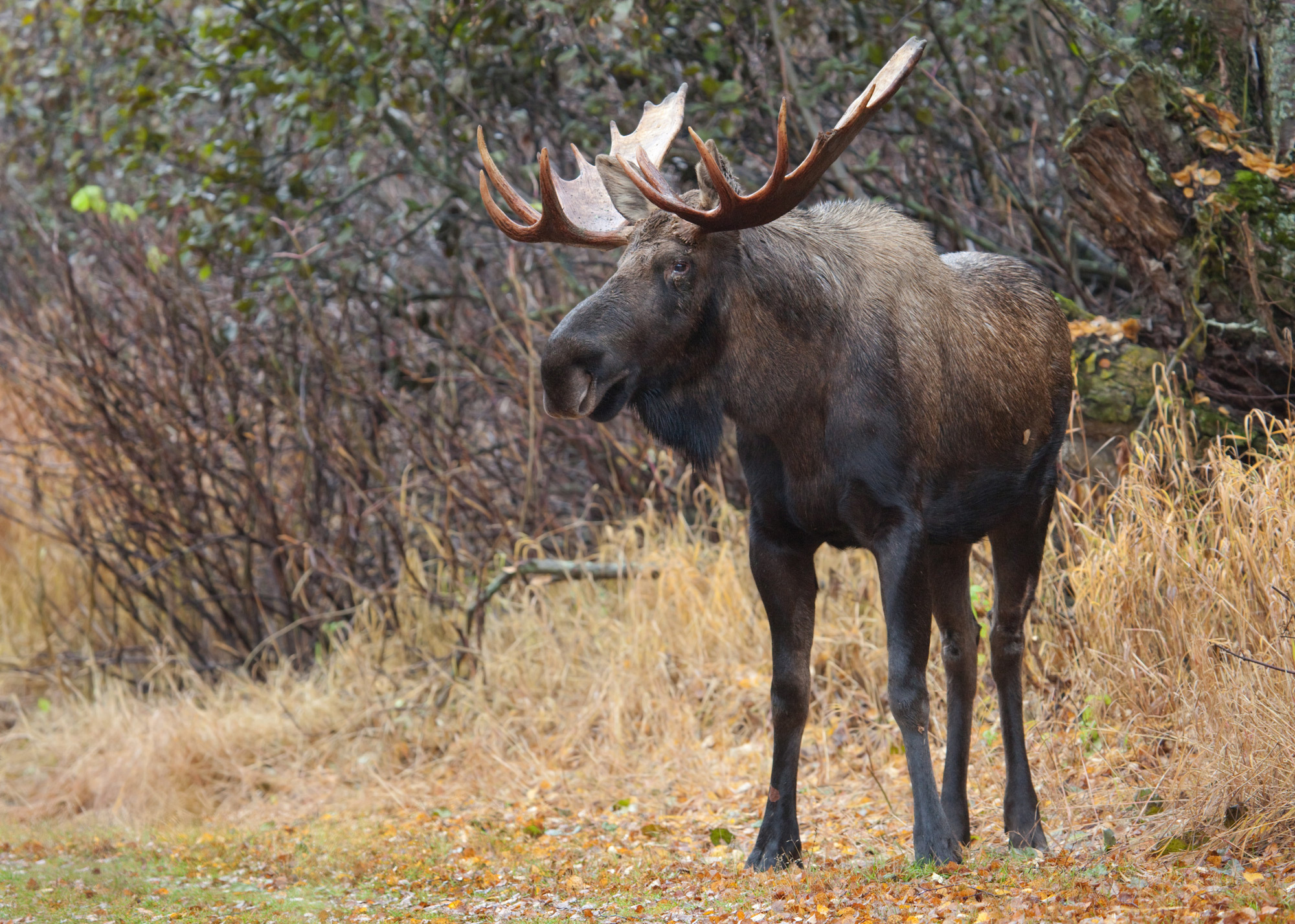Moose
The moose, with its towering presence and iconic antlers, is an emblem of Canada's wild spaces, and Alberta is no exception. Wandering through its forests, wetlands, and mountainous terrains, the moose holds ecological, cultural, and even culinary importance in the province.

More on Moose
About
The moose (Alces alces) is the largest member of the deer family. Characterized by its long legs, broad snout, and the palmate antlers of males, moose are uniquely adapted to a variety of habitats. From the dense boreal forests to the foothills of the Rocky Mountains, moose are a common yet awe-inspiring sight in Alberta, often spotted near lakes, rivers, or marshy areas where they feed on aquatic plants.
History
For Indigenous peoples of Alberta, the moose has always been a creature of great significance. Beyond its role as a source of sustenance, moose feature prominently in many histories, representing strength, wisdom, and resilience. Their paths and patterns have often guided Indigenous hunting and migration routes. With European settlers' arrival, the moose also became a symbol of the vast wilderness of Canada, representing both the challenges and promises of the land.
Ways To Cook
Moose meat is highly regarded for its rich flavour, lean profile, and nutritional value. It's a staple in many Indigenous diets and has been for millennia. The meat is often described as sweet, tender, and less gamey than other wild meats. In Alberta, moose might be grilled as steaks, slow-cooked in stews, or ground into sausages and burgers. Marinating moose can enhance its tenderness and introduce a blend of flavours, with juniper berries, rosemary, and garlic being popular choices. Beyond its meat, moose hides have historically been used by Indigenous communities for crafting clothing, tools, and ceremonial items, showcasing the animal's holistic value.
